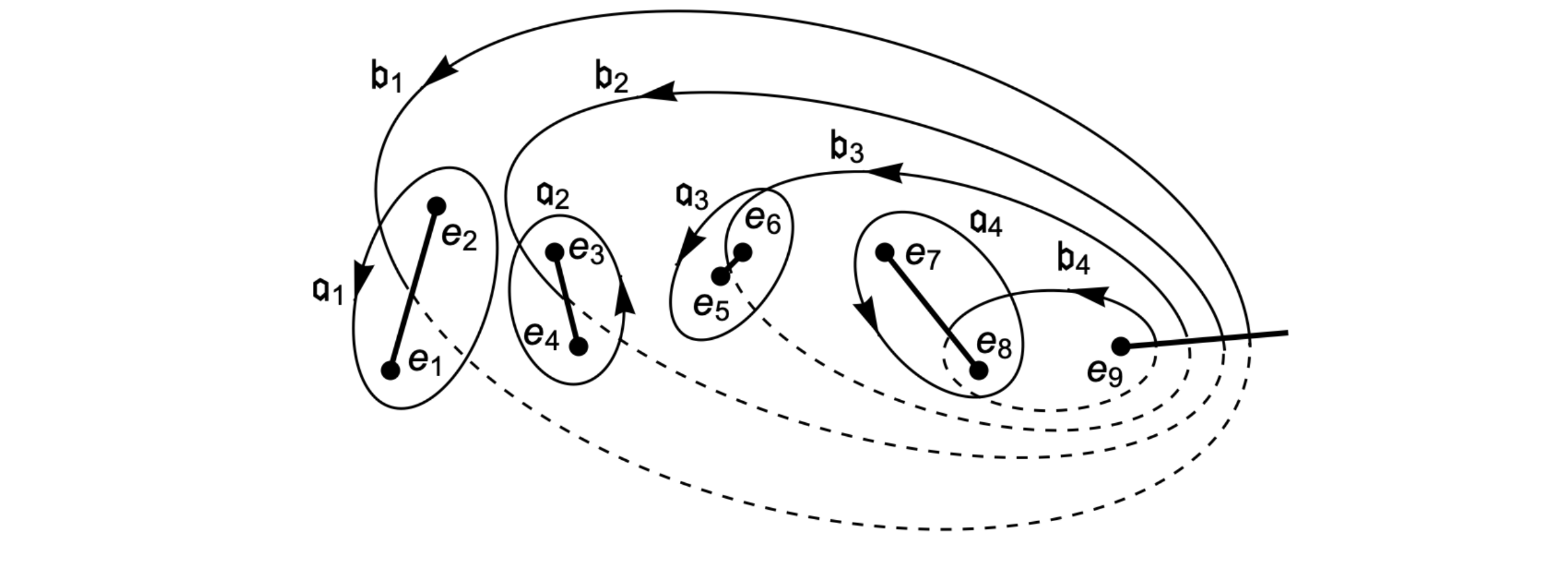
ABSTRACT: In this discussion 2-, 3-, and 4-torsion divisors are computed directly from points of the Jacobian variety of a genus 4 hyperelliptic curve in the canonical form. Computation of $\wp$-functions, and a solution of the Jacobi inversion problem are employed. The proposed technique works for $n$-torsion points with arbitrary $n$.
Preliminaries
The curve $\mathcal{C}$ from discussion "Uniformization of a genus 4 hyperelliptic curve with arbitrary complex branch points" is used. Periods and first kind integrals between branch points are previously computed.
Let $D$ be a positive divisor on the symmetric product $\mathcal{C}^4$. Such a divisor, which contains $4$ points, finite or infinite, and no points in involution, is called a reduced divisor. Every class of equivalence has a representative among reduced divisors. Depending on the degree, $\deg D_k = k$, we distinguish 4 types of non-trivial divisors:
- $D_4=P_1+P_2+P_3+P_4$, all four points are finite,
- $D_3=P_1+P_2+P_3+\infty$,
- $D_2=P_1+P_2+2\infty$,
- $D_1=P_1+3\infty$.
These types cover all special and non-special divisors on a curve of genus $4$. Divisor $\mathcal{O}=\{4\infty\}$ serves as neutral on $\mathcal{C}^4$, and $\deg \mathcal{O} = 0$.
Definition. A divisor $D$ is $n$-torsion if $n D \sim \mathcal{O}$, and there exists no $\widetilde{n} < n$ such that $\widetilde{n} D \sim \mathcal{O} $.
We start with a point $u[\varepsilon]$ of the Jacobian variety $\mathrm{Jac}(C)=\mathbb{C}^4 / \{\omega,\omega'\}$, which is defined by a characteristic $[\varepsilon]$ as follows $$ u[\varepsilon] = \omega\, \varepsilon + \omega' \varepsilon'. $$ Here $\omega$, and $\omega'$ are not normalized first kind period matrices along $\mathfrak{a}$-, and $\mathfrak{b}$- cycles, correspondingly. A characteristic $[ \varepsilon]= (\varepsilon', \varepsilon)^t$ is a $2\times 4$ matrix with entries within the interval $[0,1)$. Thus, $u[\varepsilon]$ is located within the fundamental domain of $\mathrm{Jac}(C)$.
If $\sigma(u[\varepsilon]) \neq 0$, or $\theta[K](\omega^{-1}u[\varepsilon]) \neq 0$, which is the same, then the Abel pre-image $\mathcal{A}^{-1} (u[\varepsilon])$ is a non-special divisor, and can be found from the solution of the Jacobi inversion problem
$$\mathcal{R}_8(x;u) \equiv x^4 - x^3 \wp_{1,1}(u) + x^2 \wp_{1,3}(u) + x \wp_{1,5}(u) + \wp_{1,7}(u) =0,$$
$$\mathcal{R}_9(x,y;u) \equiv 2y + x^3 \wp_{1,1,1}(u) + x^2 \wp_{1,1,3}(u) + x \wp_{1,1,5}(u) + \wp_{1,1,7}(u) =0.$$
On the curve under consideration, n-torsion divisors with $n>2$ are non-special. Special divisors arise among $2$-torsion divisors, which are composed of branch points. It is easy to construct special $2$-torsion divisors from the correspondence between characteristics $[\varepsilon]+[K]\;(\text{mod } 2)$ and partitions of the set of indices of finite branch points, see [Fay, Theta functions on Riemann surfaces, Lectures Notes in Math. (Berlin), vol. 352, Springer, 1973].
 Attachments:
Attachments: